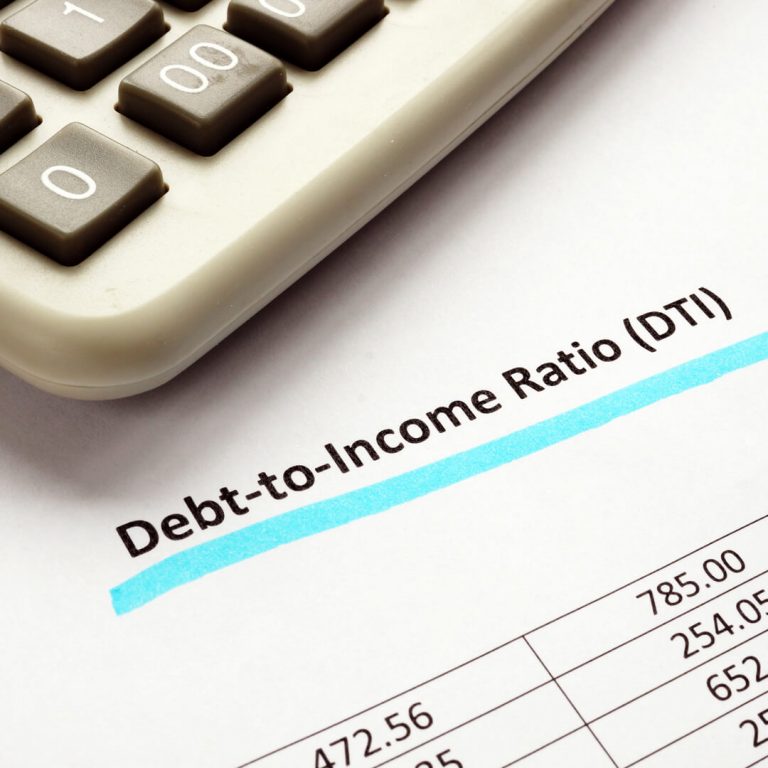You hear about the importance of your credit score all the time. From TV ads alone, everyone knows the higher your credit score, the easier it is to get approved for loans and qualify for lower interest rates. But debt-to-income (DTI) ratio is another factor that financial institutions look at when underwriting loans. So, it’s wise to understand what DTI is, how it’s calculated and what you can do to improve yours.
No matter whether you want to take out a mortgage or a loan to finance a new car or personal loan, your approval depends in part on your DTI, along with things like your credit score, down payment amount and employment history. Your DTI can even affect your ability to get a new credit card, although often to a lesser degree.
What is DTI?
Your DTI ratio is actually a pretty simple equation: It’s your total monthly debt payments divided by your total monthly gross income. Seeing how much of your income goes toward your debt obligations each month helps the financial institution reviewing your mortgage, personal loan or credit card application to determine if you can repay the amount you want to borrow.
In general, a DTI no higher than 36% is considered good. Depending on the type of loan you’re applying for and the lender’s requirements, you may be approved with a higher DTI.
How to calculate your DTI ratio.
Before buying a house—or really before applying for any loan—it’s best to know where your finances stand, including your DTI. When you do this, you can reassure yourself that the loan you’re considering makes good financial sense for you. It also helps ensure that you don’t run into any unforeseen obstacles with your application.
To calculate your own DTI, follow these three steps.
1. Add up your total monthly debt.
Include the following monthly payment types:
- Current mortgage or rent
- Student loans
- Car loans
- Personal loans
- Credit card minimums
- Child support or alimony
- Any co-signed loans
The amount you use for your mortgage payment should include the principal and interest plus any escrowed amounts for property taxes, homeowners insurance or homeowners association fees.
2. Add up your total monthly gross income.
Include income from any of these sources:
- Wages or salary
- Tips and bonuses
- Pension or social security
- Child support or alimony
- Any other income
Remember to use your gross income, meaning before any taxes or other deductions are taken out.
3. Divide the total from step one by the total in step two to get your DTI.
Resources like Zillow, Calculator.net and the Consumer Financial Protection Bureau provide online DTI calculators to help you.
Comparing scenarios.
If your monthly mortgage payment is $1,500 and you have a $350 student loan payment, a $400 car payment and three credit cards that each have a $100 monthly minimum payment, your total monthly debt adds up to $2,550. Watch how your DTI goes down as your monthly income goes up:
- At $6,000, your DTI is 42.5%
- At $8,000, your DTI is 31.9%
- At $10,000, your DTI is 25.5%
What’s the difference between Front-End and Back-End DTI?
You might also hear people talk about front-end DTI and back-end DTI because most financial institutions look at both figures before deciding whether to approve your mortgage loan application. Back-end DTI is the DTI ratio we’ve described so far that includes all your monthly debt payments.
Front-end DTI is more limited. Also referred to as the housing ratio, it only includes your mortgage principal and interest, plus any amounts escrowed for property taxes, homeowners insurance and homeowners association fees. The total of these payments is divided by your monthly gross income to get your front-end DTI, which typically needs to be around 28% or less to qualify for a mortgage.
How to lower your DTI.
If your self-calculated front-end or back-end DTI is too high for you to qualify for the loan you want, you have two ways to bring it down:
- Increase your monthly income: You might ask your boss for a raise, look for a new job that pays more, pick up an online side hustle or take on a local part-time gig. Anything that increases your monthly gross income can reduce your DTI.
- Decrease your monthly debt obligations: Your housing payment makes up a large percentage of your total monthly debt. Shopping for a home within your budget—rather than one that’s going to stretch you too far every month—lowers your DTI. Paying down your credit card debt so that your monthly minimum payments aren’t as high is another way to decrease it.
If you pull both of those levers at the same time, you can decrease your DTI even further, making your loan approval a much better bet.
Editor’s note: Quorum is not affiliated with any of the companies mentioned in this article and derives no benefit from these businesses for placement in this article.






Comments Section
Please note: Comments are not monitored for member servicing inquiries and will not be published. If you have a question or comment about a Quorum product or account, please visit quorumfcu.org to submit a query with our Member Service Team. Thank you.